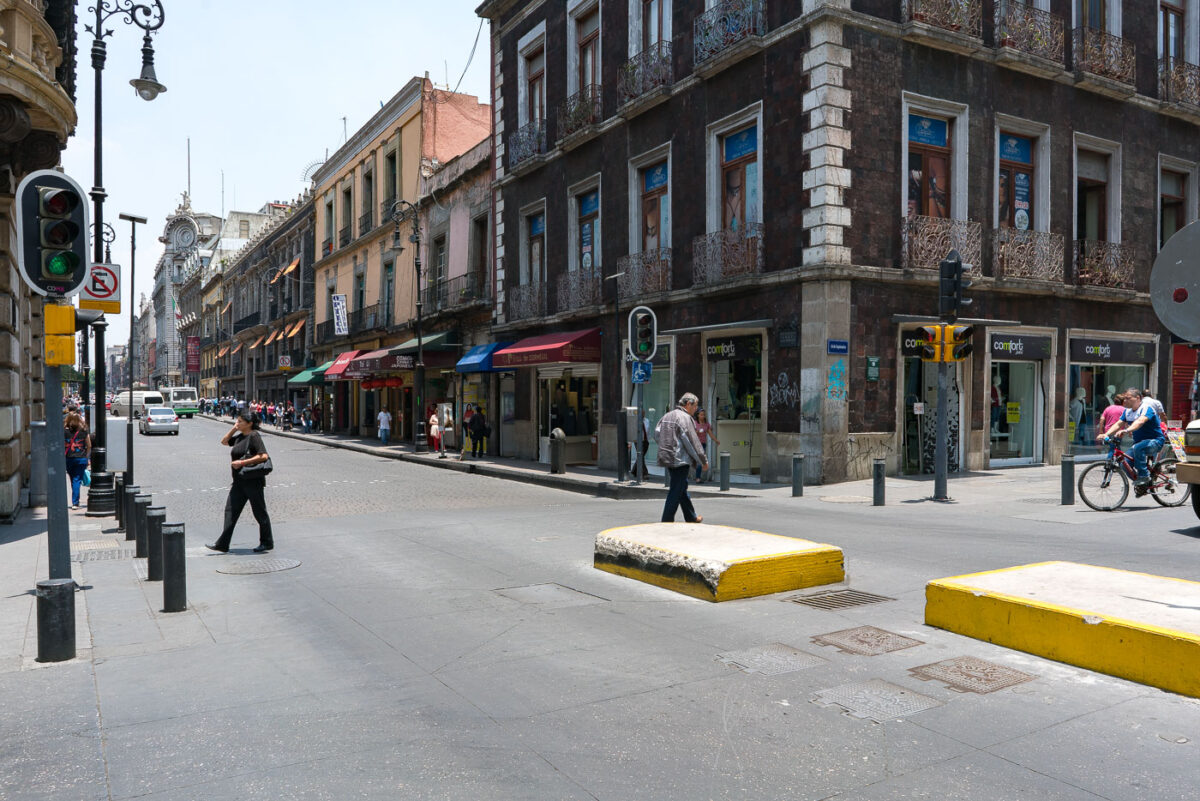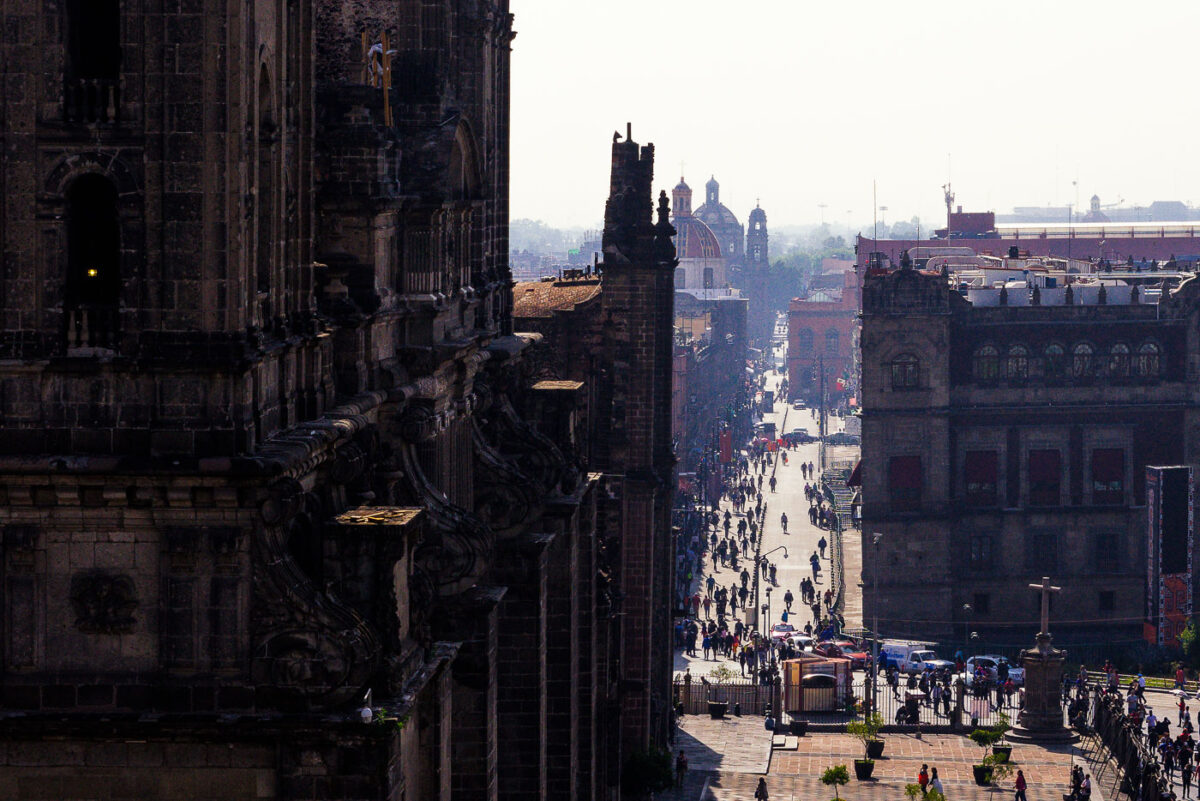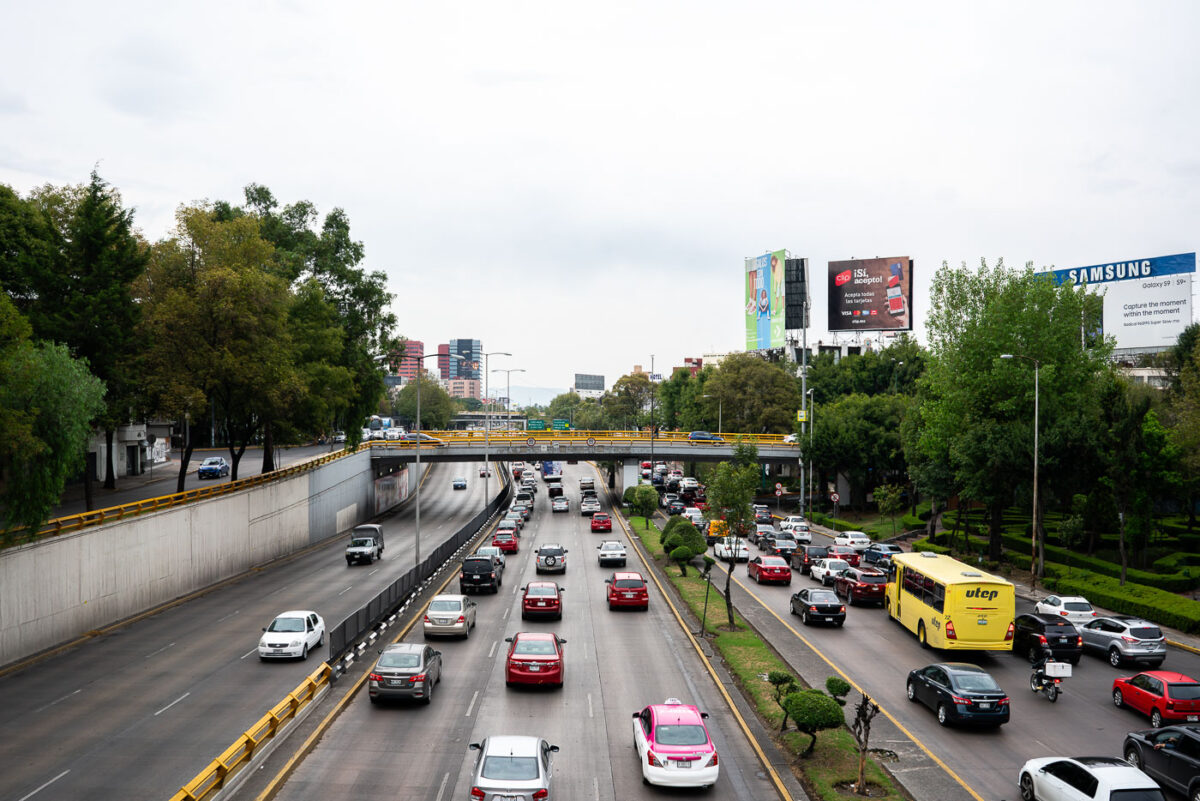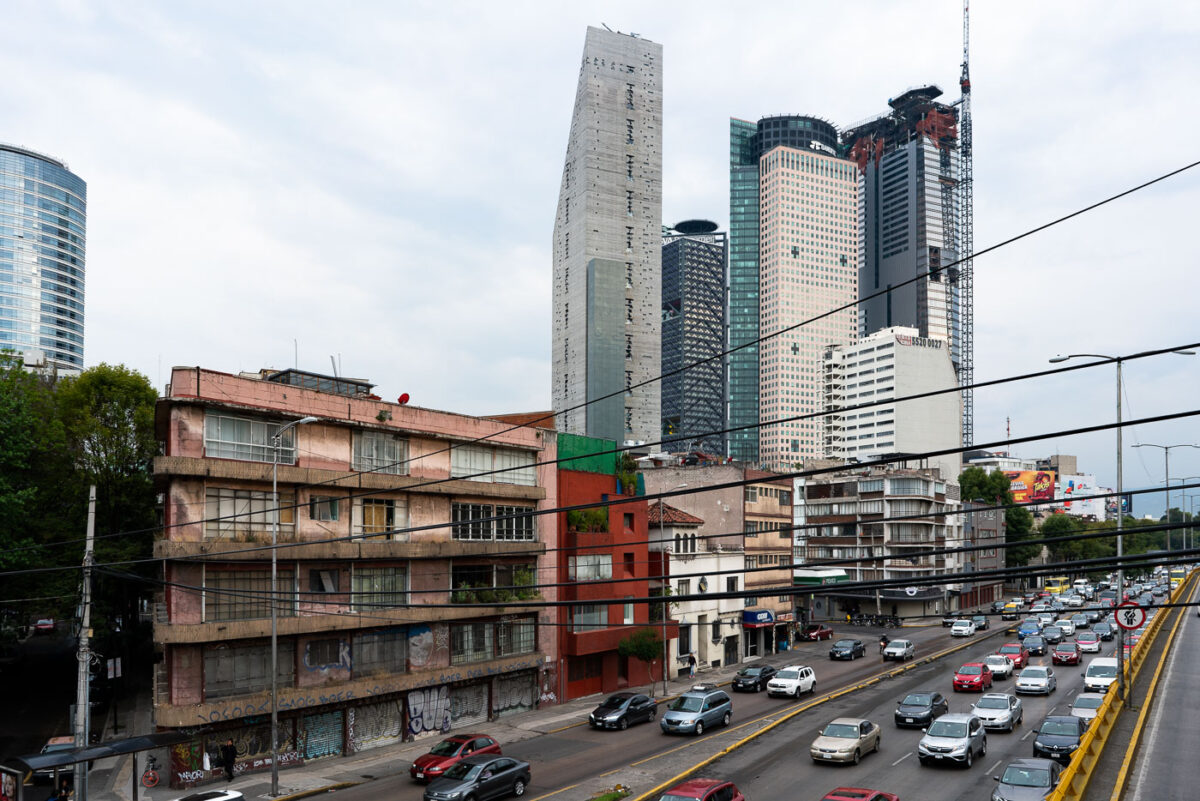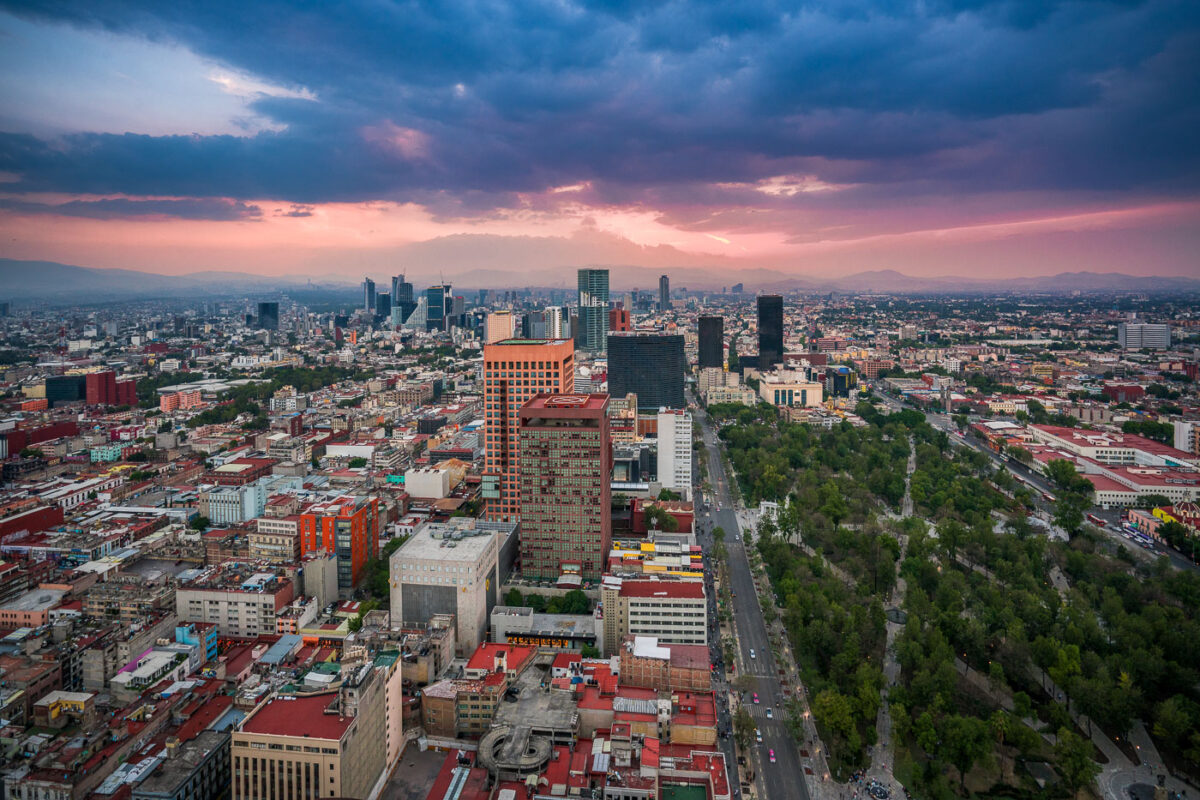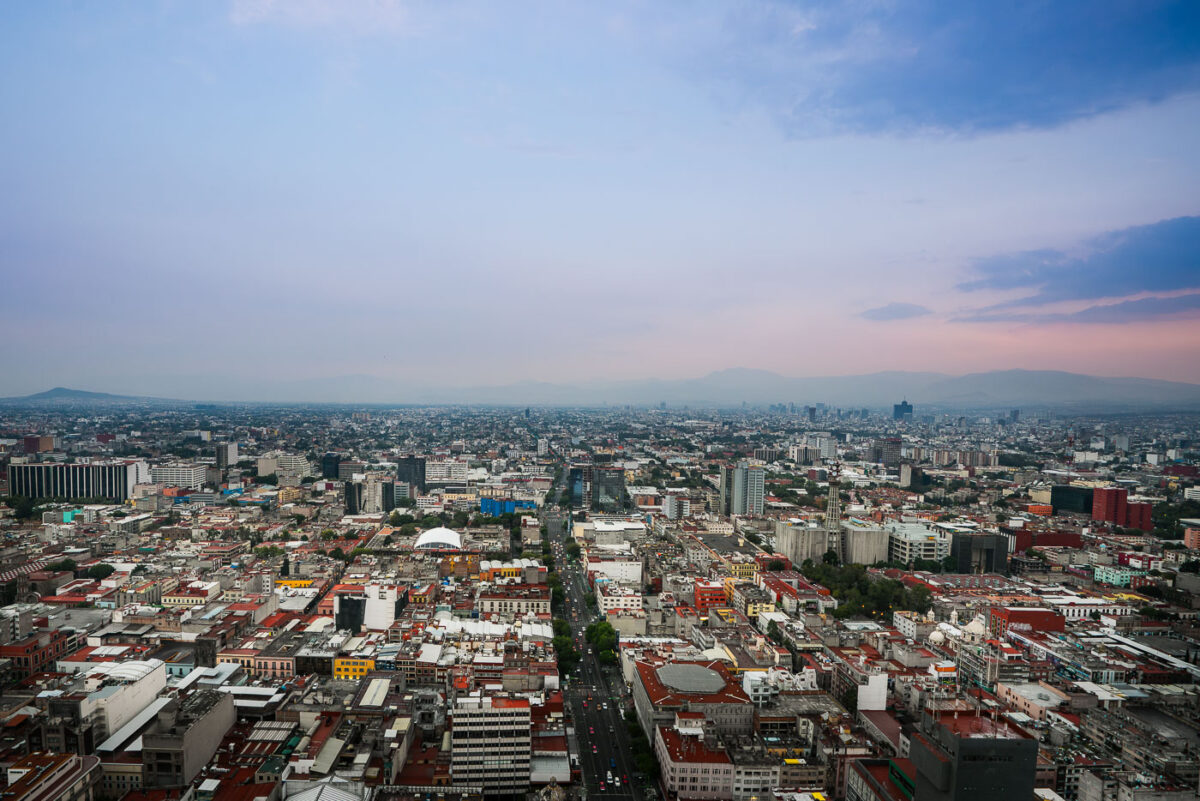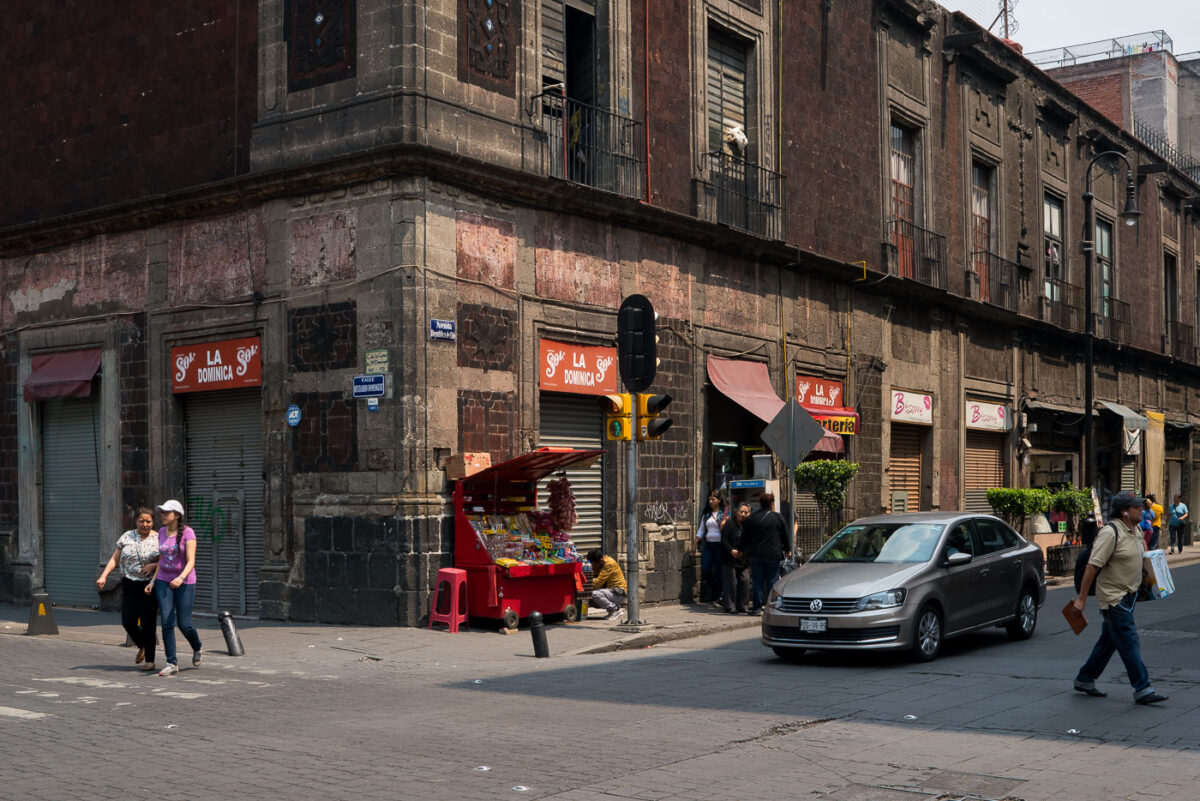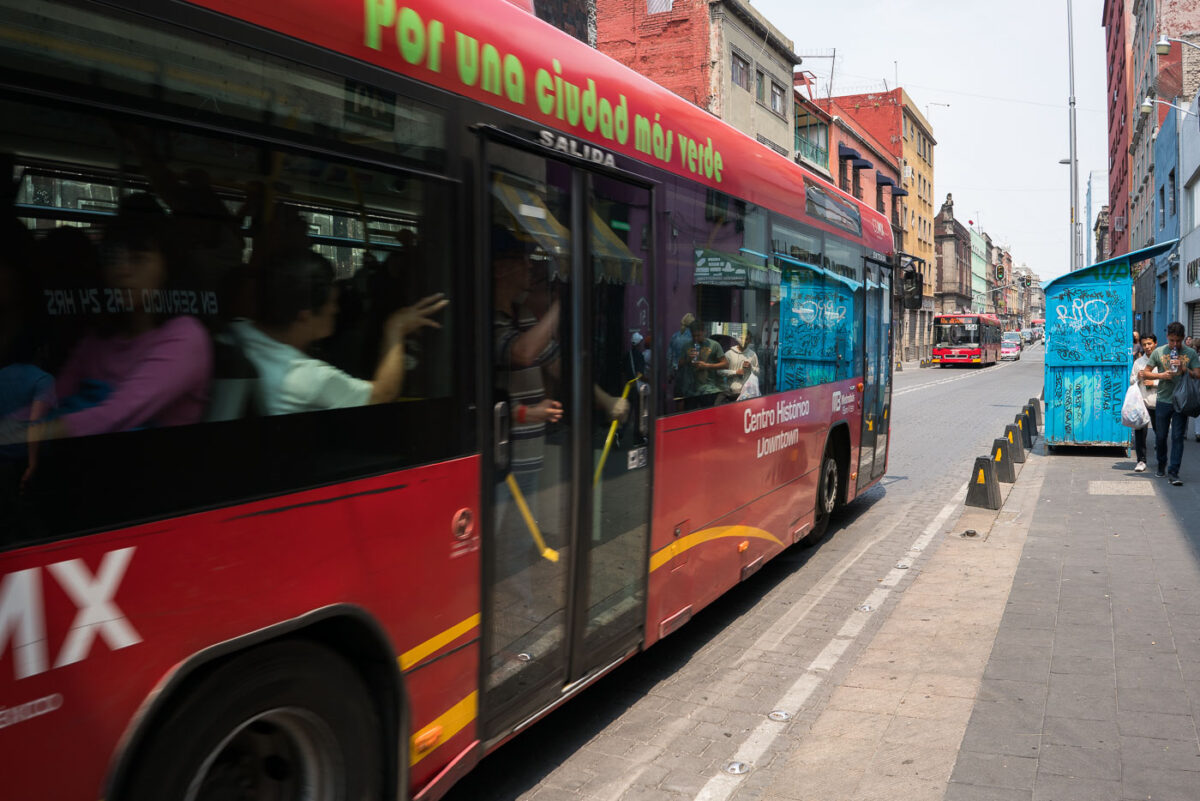
Old Portal de Mercaderes
Pedestrians cross a street at Mexico City’s Zócalo, with the ornate colonial-era Government Palace and other historic administrative buildings lining the square. The Mexican flag is visible flying above the rooftops, while traffic lights and landscaped roundabouts frame the busy intersection.
